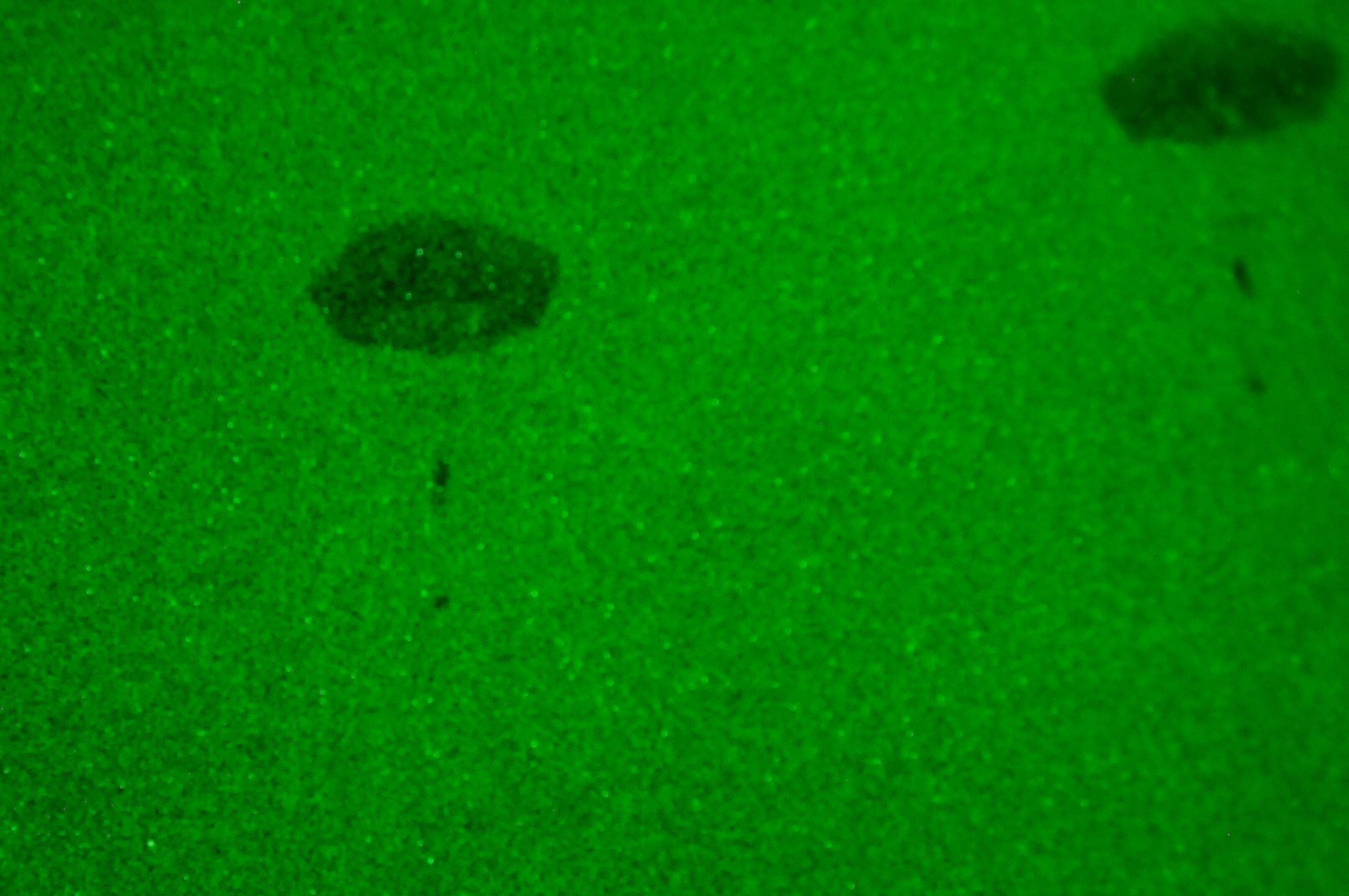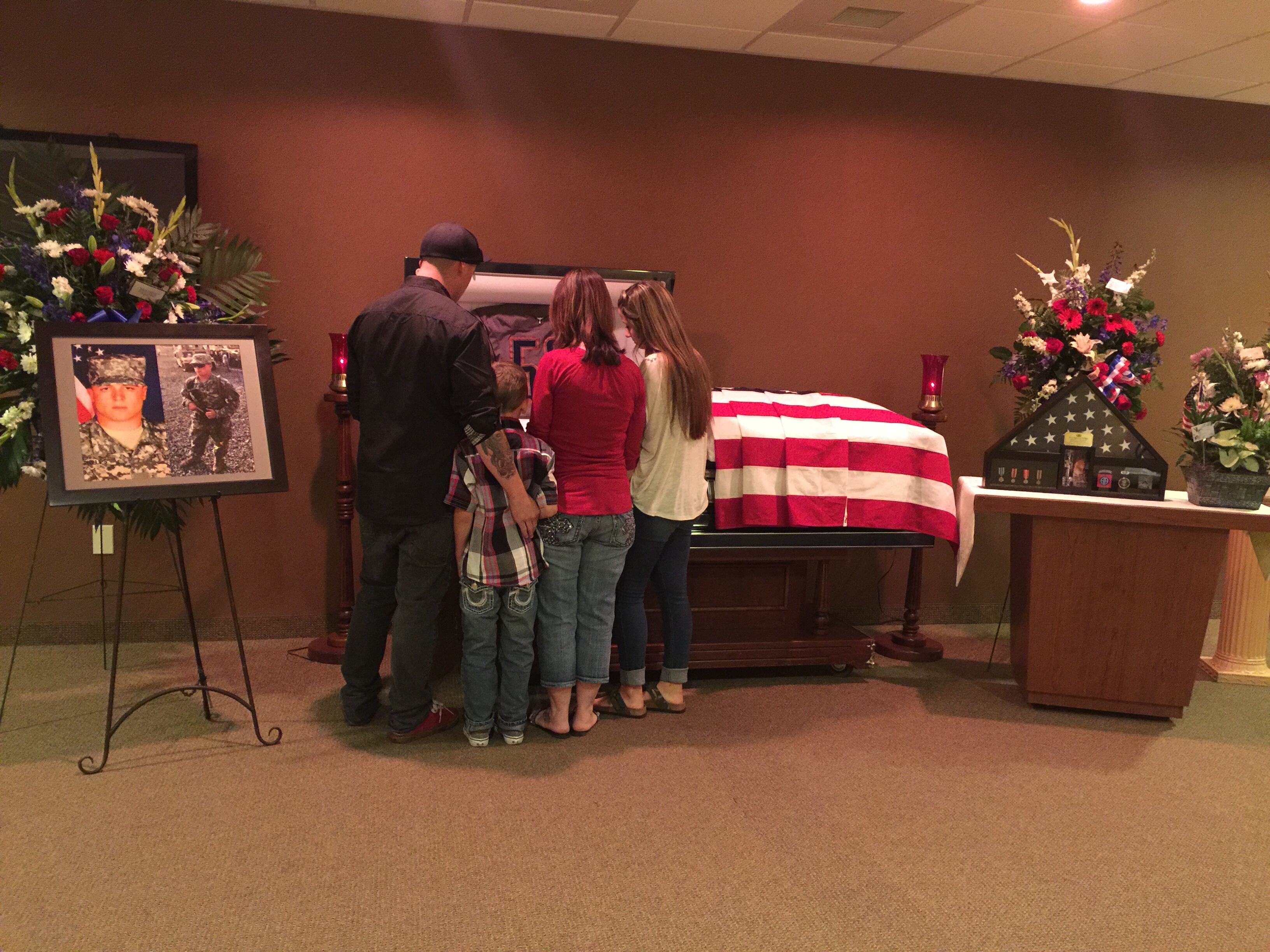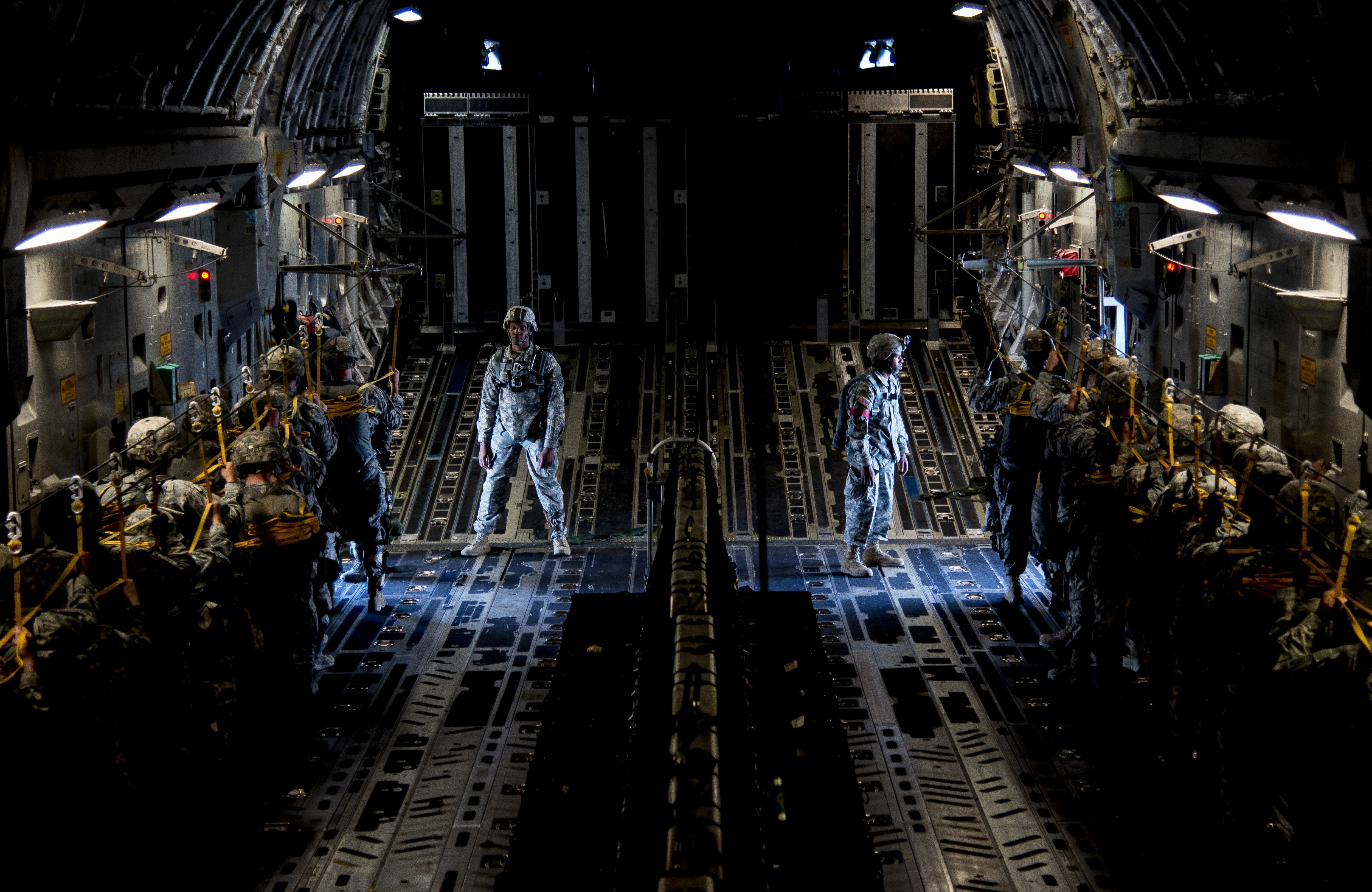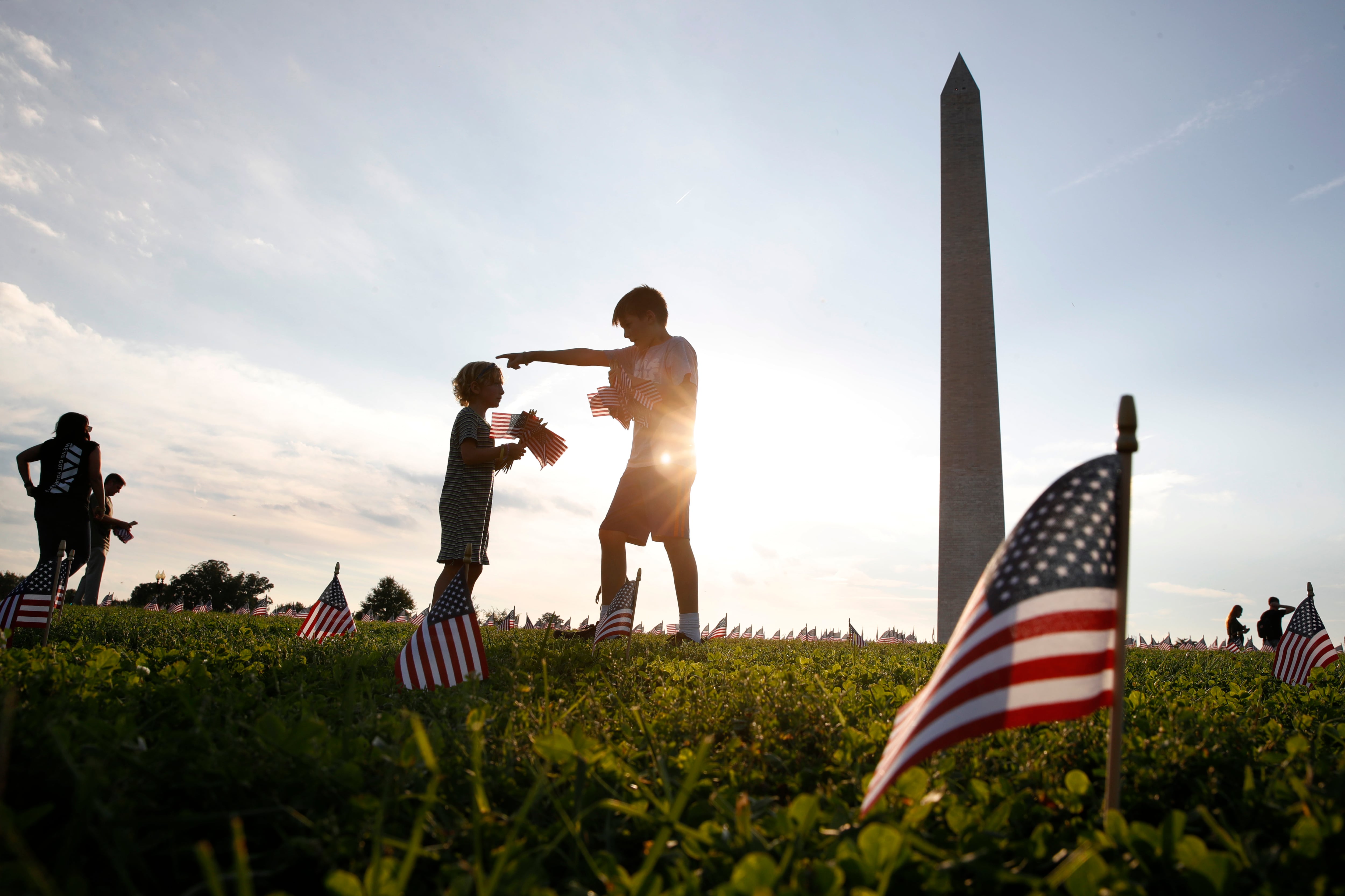It was the first night jump for Pvt. Josh Phillips. It was also the 19-year-old's first jump in bad weather, first in full combat gear, first from a C-17 and first mass tactical exercise.
Tragically, the static-line jump would also be his last.
On April 16, Phillips and 2,000 paratroopers with the 82nd Airborne Division, had traveled to Joint Readiness Training Center Fort Polk, Louisiana, for a simulated seizure of an airstrip. Weather was an issue – it was raining, there were light winds and low clouds. The twilight-timed jump was delayed into the night.
A first sergeant and master-rated jumper would later call it "without question the most chaotic [Airborne] timeline from final manifest to exiting the [aircraft] that I have witnessed in 15 years of serving in ABN units," according to testimony in the AR 15-6 unit investigation.

Paratroopers from the 2nd Brigade Combat Team, 82nd Airborne Division, conduct a combat night jump. The 82nd is now limiting the number of variables paratroopers face early in their airborne careers.
Photo Credit: Spc. Eliverto Larios/Army
During the jump, a soldier exited improperly and briefly became towed by the plane, according to the report, acquired by Army Times through a Freedom of Information Act request. The towed jumper's rucksack accidentally released and remained tethered to him by his lowering line as it flew through the air.
The investigation determined that in a high-speed, mid-air collision, the ruck tore a gaping hole in Phillips' deploying parachute shortly after he exited from the other side of the plane.
The damage to his T-11 parachute was deemed "catastrophic" in the report. Phillips, despite dropping far too fast, never pulled his reserve chute "for unknown reasons." Witnesses on the ground heard a "fluttering" sound and saw his rapid descent.
Phillips was killed instantly. It's unclear if he was knocked unconscious during the jump. His mother said the medical examiner told her that likely was the case.
Even so, the investigation cited Phillips’ inexperience as a contributing factor in his death. It also identified numerous other problems, and not just the towed jumper’s bad exit. The weather played a role. A mandatory briefing had been skipped. And multiple soldiers said described the jump as disorganized.
The report determined there were no criminal actions or negligence involved in the accident. Master Sgt. Patrick Malone, an 82nd Airborne Division spokesman, said the investigation was thorough and conducted by "a very experienced Paratrooper who is a jumpmaster and parachute rigger, who has been on jump status for decades."
"The circumstances that led to the damage and malfunction of PV2 Phillips' parachute are extremely rare," Malone told Army Times in an emailed statement. "We have implemented measures and place more emphasis in training on proper exit from the aircraft and on the importance of activating the reserve parachute if you are falling faster or cannot compare your rate of descent."

The family of Pvt. Joshua Phillips at his funeral. "This is the very last picture of me with my four children," Jamie Diedrich told Army Times.
Photo Credit: Courtesy of Jamie Diedrich
'He wasn't ready'
"My biggest thing is my son should not have been there," she told Army Times. "They thought he was ready. He wasn't ready."
The investigators agreed there were too many variables for an inexperienced jumper to face that night. It was Phillip's seventh jump total, his second outside of Airborne School. Investigators recommended Airborne avoid sending rookies into jumps with that many complications and firsts.
"The jump progression has never been outlined in the overriding static line doctrine written by Fort Benning," Arnold said. It was always a leader's decision to assess his own men. We provided a framework."
Now the doctrine recommends a progression. New paratroopers should first conduct a daytime jump with combat gear, followed by night jump with combat gear, and conclude with a mass tactical jump, Arnold said. A soldier would not move on to the next stage unless his leaders deem him ready.
Designed to prevent future incidents, it's unclear whether this new progression would have helped Phillips. His mother said she tracked down the medical examiner. The medical examiner, Diedrich said, told her the autopsy indicated Phillips was not scared — or even alert or conscious — when he hit the ground.
Bad Exit
The investigation also probed what caused the towed paratrooper's "weak exit" from the plane.
"[Redacted] did not make a 90-degree turn into the paratroop door and did not achieve a vigorous exit off the paratroop platform," the investigation concluded.
A first sergeant said in a sworn statement that he "saw one jumper run into the door" as he exited the plane.

Soldiers with the 82nd Airborne Division prepare to jump from a C-17.
Photo Credit: Airman 1st Class Clayton Cupit/Air Force
The report noted that the towed jumper had a canteen attached on the outside of his ruck. The extra girth may have caused the soldier to bump into the door and result in an improper exit.
The towed jumper's account of the night is complicated by memory gaps.
He told investigators he remembered a "decent" exit. He remembers being towed with his feet toward the aircraft, hugging his reserve. He remembers something dark hitting him, knocking off his helmet and spinning him. He also remembers his reserve parachute then deploying as he was towed.
His sworn statement included his recollections of the descent:
"I am hit repetitively during the sensation of spinning," his statement reads. "It felt like I was hit from all sides. Then I black out. I woke up on the ground with my reserve deployed. It is in the tree along with my main. My equipment was lowered. My kit was packed but I do not remember packing it. I believe I came to and lowered my equipment in the air. Maybe I was in and out."
Phillips' parachute wasn't the only collision with the towed jumper, who is estimated to have been towed for five seconds. A soldier who jumped behind the towed individual said he felt being clipped in the air. By what, he couldn't say.
The towed jumper, according to the investigation, had made 35 jumps — and had also suffered eight concussions during airborne operations. Army Times asked Arnold whether that many concussions was atypical. Arnold said he didn't know enough about the specific soldier involved, but said that, generally speaking, that number of concussions is a flag.
"To me, as a leader, that would be a concern," Arnold said. "I would be concerned if someone had eight concussions on that many jumps."
To reduce pack-related risks, the report recommended practice runs from a 34-foot tower with the pack and the Modular Airborne Weapons Case. In addition, it recommended a packing limit for the MAWC; designed for a rifle, some soldiers put more gear into it, and thatwhich can make it bulkier.
Should it have been canceled?
The July 8 report documented times where the leadership considered and evaluated conditions and took steps to mitigate risk. It also said Brig. Gen. Brian Winski, deputy commanding general of the 82nd Airborne Division, and a brigade commander whose name was redacted in the report, both jumped in the operation and later spoke to investigators about the decision to proceed with the mission. The supplemental report did not elaborate on their insights into the decision, however, and the original report did not include any direct testimony from the mission's commander.
Despite the rain and darkness — a late-arriving plane pushed the jump back 30 minutes — the operation was ruled a "go." Arnold noted that the T-11 is designed for rain or shine. Weather Underground's data said it was raining, but not heavily, and that winds were well under 10 mph at Fort Polk during the jump just before 8:30 p.m.
Low clouds did throw in a wrinkle. The first sergeant and master-rated jumper who jumped right after Phillips told investigators he almost activated his reserve because he couldn't see his deployed parachute to confirm it was working — until he cleared the clouds at about 400 feet. From there, a near free-fall would leave a solider only a few seconds before impact.

Pvt. Joshua Phillips with his sister Chelsea on his back; his brother TJ with his wife Renae on his back; his brother Zachary (center) with his niece Rylee. This picture was taken in August 2014, three days before Pvt. Phillips left for boot camp.
Photo Credit: Courtesy of Jaimie Diedrich
One jumper said he didn't understand why the jump wasn't cancelled, saying the conditions were worse than his last three jumps at Fort Bragg that were cancelled by weather.
"Why is it that when we get to JRTC all safety considerations go out the window and it cost someone their life?" the soldier's sworn statement said. "The whole airborne operation was unorganized and rushed. I did not feel good about this jump."
Other findings
The investigation found the plane's jumpmaster failed to hold a "marshaling area control officer brief" — a mandatory last-minute information session to be conducted just before boarding the plane. This could have been an opportunity to discuss safety protocols for adverse weather.
The jumpmaster was required to be recertified before serving in that role again. The report also recommended a renewed focus for all Airborne soldiers on proper exits and proper use of the reserve parachute.
The emergency response didn't factor into Phillips' death, but the report did find room for improvement. Medical help arrived 30 minutes after the call, and did not have all of the gear or training necessary. The report recommended leaders incorporate available medical assets into risk assessments for jumps that occur outside of Fort Bragg, North Carolina.
Unrelated to the crash and prior to the jump: Airborne leaders discovered a rigger who packed parachutes for the jump had tested positive for cocaine. Parachutes that rigger packed were removed.
Multiple parachutes packed by the rigger who packed Phillips' parachute were inspected, with no major deficiencies found.
There have been five deaths since 2011 involving the new T-11 parachute. The Army says there are more than 60,000 jumps annually.
"Airborne operations are inherently dangerous and we remain committed to making them as safe as possible," Malone said.
'He was going to go far'
Diedrich lovingly calls her son a "badass" — and it was even etched into his gravestone.
He loved football; he was a 5-foot-11, 230-pound star linebacker at Las Vegas' Legacy High, the team captain and a go-to postgame quote for the local paper. He was generous, his mother said.
"He would have given the shirt off his back to a person who didn't have it," she said. "If a kid didn't have cleats for football, he'd give them his."
And he was popular; she said 700 people showed up to his funeral.
Phillips left behind a wife, Karlee; when he died he had been married for three-plus months and his stepdaughter was 20 months old.
He turned down college football scholarships to join the Army, where Diedrich said he had been thriving. He was a team leader in basic. An Instagram photo posted to his account in March shows him standing in his combat uniform, a belt of ammunition around his neck, with the caption: "The struggle is real, but at the end of the day I love what I do!"
"He was going to go far," Diedrich said. "He was already deemed a leader. He was unbreakable. Even at boot camp, they couldn’t’ shake him. They couldn’t rattle him. They couldn’t’ scare him."
"He wanted to be a Ranger," she said. "That was his next step."
Still, his mom said, he texted his wife the day of the jump, a little worried.
"He said, 'I'm concerned about this jump, the weather,'" Diedrich told Army Times. "And you get other people [in the investigation] saying the exact same things. It wasn't that he was scared, he just had concerns about the jump."

The gravestone of Pvt. Joshua Phillips includes his wings, the Army logo and the hashtag "#Armylife."
Photo Credit: Courtesy of Jamie Diedrich





